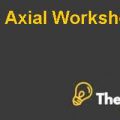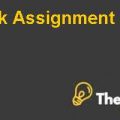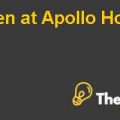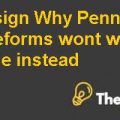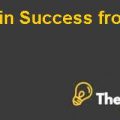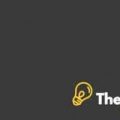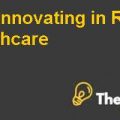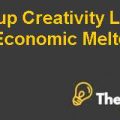
Statement of Problem:
Sterling is facing a competitive decline in its growth of sales. It generates healthy profits, butits growth has slowed down that makes it more difficult to survive.The company is well diversified but it also needs to add other division that has better growth than it.
Discussion:
It consists of all decisions and its resulted outcomes of decision making. The detailed investment appraisal discussion and calculation are made.
Cost of equity:
Cost of equity requires return of the shareholders. This can be obtained through capital asset pricing model, but this method has many assumptions and models that are required to be calculated before going through CAPM calculation.
The first variable is risk free rate. The risk free rate is government Treasury bond rates for long-term investments (3.1% in this case). The other market is the risk premium that is the return of the market above to that government treasure bond (5% in this case). The final variable is beta equity that can be derived from adjusting financial risk of the company with the systematic risk of the industry in which the company is operating (1.04 in this case).
Weighted average cost of capital (WACC):
The correct capital structure is 70% of the equity finance and 30% of the debt financing. The structure is the targeted structure of Sterling that has estimated for the structured finance for germicidal, sanitation antiseptic products unit.The initial investment and any further expansion of this division are required to be made in the structure defined above.
The WACC is 6.8% of the investment appraisal of this project. The debt can be available to the company at 5.1% per annum that base on the 3.1% of US Treasury Bills.The debt and equity combination makes the total required return of the investment of 6.8% per annum.
Free cash flows till 2022 of the base case:
The free cash flow is the best measure for investment appraisal that is used under the project investment appraisal. This has many assumptions that are required to base the calculations of this method.
The first assumption is the WACC; it is assumed that the WACC will remain the same for 20 years of investment tenor. The assumption is also the limitation because the cost of debt and cost of equity can change after some time and capital structure can also change because the WACC is based on the capital structure and its required rates.
The second assumption is growth; the growth is purely based on assumptions on the basis of future market growth expectation and the performance of the individual company. The growth rate can change in future because the market does not remain the same for alonger period such asin this case there is 20 year investment tenure.
The third assumption is terminal value. In this case, it is estimated that the terminal value of the previous years of the investment is equal to 9 times of that value of 2022. The assumption is made on the best possible information.
There is no other capital investment except for the initial investment and investment intervals. There is no salvage value at the end of its investment tenor. The assumption does not look realistic as there is always a salvage value, but its estimation is not possible.
The free cash flows for the individual years are given in the appendix of NPV without expansion plan. The free cash flow value in 2013 is $17.8 million for the first period and $23.97 million for last period before terminal value i.e.2022.
Terminal value of base case:
The terminal value of this project is $215.7 million at the end of 2022. This is simply a 9 times multiple of that net cash inflows from the year 2022. This is based on the best possible information available from the market factors. The value is discounted because it is calculated after adjusting the WACC.
The terminal value is for ten more years and not for the perpetual. It may be possible that the company may survive for more than 10 years after 2022. This is not assumed that the company can survive over twenty years of the investment tenor.
Net Present Value of base case:
The net present value of the base case investment is negative $4.6 million with the current assumptions. The project does not look worthwhile for the shareholders of the company. It cannot even meet its required return of its shareholder and debt holders. This investment is only possible to proceed if the investors’ required return is lower than 6.8% and another factor is the increase in the interval cash inflows.............................
This is just a sample partial case solution. Please place the order on the website to order your own originally done case solution.


